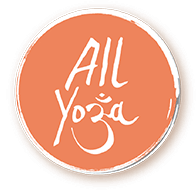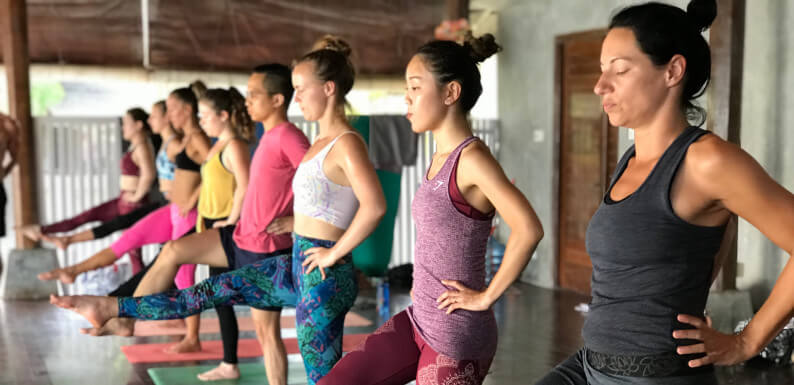5 reasons why an Ashtanga course is best for Vinyasa practitioners
What comes to mind when you think of Ashtanga-Vinyasa yoga? Is it rigidity and structure? Maybe the reputation that certain Ashtangis have for being very strict and ‘hardcore’?! Or maybe you’re not really sure what Ashtanga-Vinyasa yoga actually is? Well, I’m here to enlighten you, and to try to persuade you to come on over to the Dark side…
In all seriousness, I am so happy that I chose to train in Ashtanga-Vinyasa yoga, rather than Vinyasa or Hatha. Here’s why.
1. It provides you a foundation for all sequences
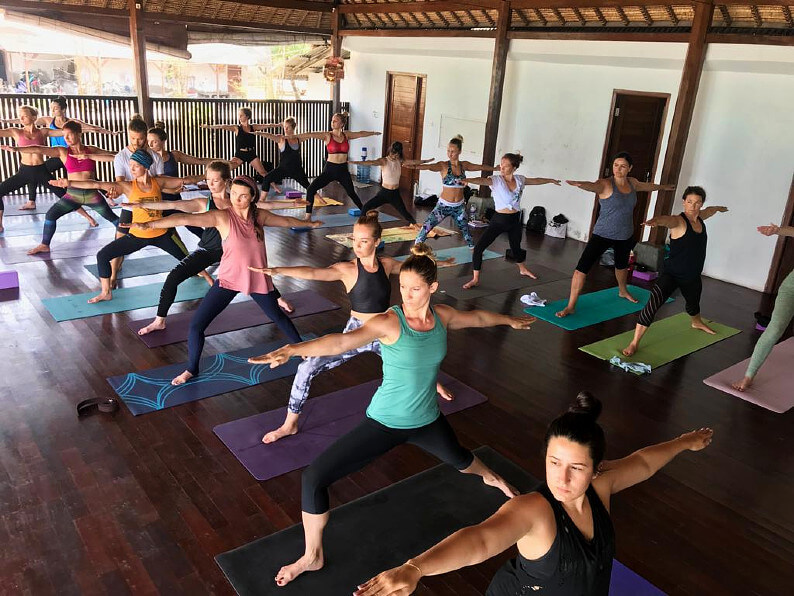
Ashtanga teaches you the foundational poses which you can later build on or mix up to create a vinyasa class. In addition, most vinyasa class sequences follow the framework set out by Ashtanga: beginning with some sun salutations to warm up, then standing poses, seated poses, and then closing postures.
If you’ve ever learnt to play piano, it’s the same principle: we start by learning to play the scales, then building up to learning a famous piece of classical music. The Ashtanga primary sequence is like a famous piece of classical music in the yoga world. Once you understand the foundational building blocks (the scales and classical piece of music), you can then learn to improvise or create your own music. This is like vinyasa sequencing. So, training in Ashtanga gives you a strong foundation from which you can then go on to create your own vinyasa sequences.
But it doesn’t work the other way around – you can’t teach Ashtanga with only a vinyasa teacher training! So it makes sense to train in Ashtanga, and be able to teach two styles, rather than training in Vinyasa and only being able to teach Vinyasa!
2. It gives you a niche
Let’s be honest, there are countless vinyasa teachers out there, and hundreds of vinyasa classes for students and members of the public to choose from. But there are very few Ashtanga teachers (in the city I live in, there are only 2 Ashtanga studios, out of around 10 studios in total), so training in this style helps you stand out from the crowd as a teacher, and means you can offer a niche class in a sea of vinyasas and hathas…
3. You can better improve your practice
By providing you a set sequence for you to practice on your own, Ashtanga helps you develop your self-practice, meaning you never have to take another yoga class again (unless you want to!!)! Even if you don’t want to teach yoga, this in itself is an invaluable gift, since self-practice is the heart of yoga, allowing us to turn inwards, to cultivate self-knowledge, awareness, and intuition.
It also allows us to improve on a more physical level, and to dive deeper into certain key poses. Vinyasa classes may be fun, but when we are constantly doing different poses each class, we aren’t able to improve in one particular posture as we haven’t taken the time to work on it consistently. In Ashtanga, since you are doing the same poses each class you can easily see and track your progress, and take your time to really nail a hard pose, before moving on to something new. This is not only more motivating for you and your students (compared to throwing random new poses at them each class, many of which they might not be able to do), but also safer, as you are able to build a strong foundation, strengthening the right muscles etc., and be able to enter, sustain, and exit the pose safely and comfortably.
4. It’s more sustainable to teach
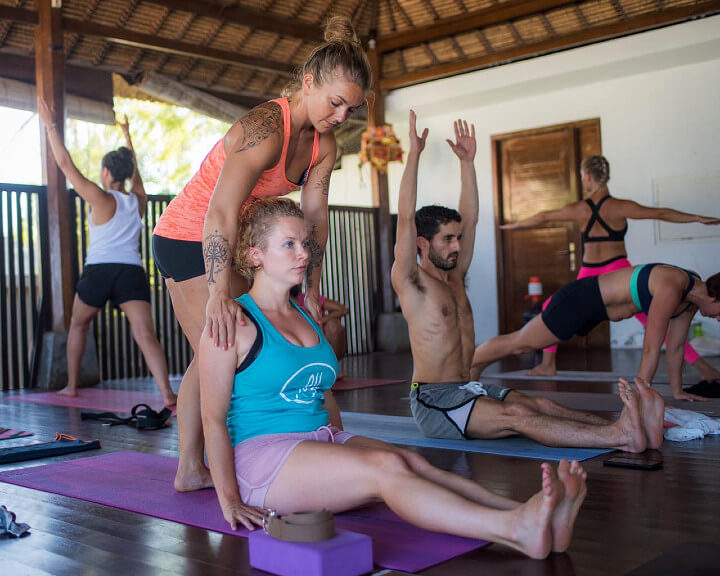
As someone who has taught multiple vinyasa classes a week, I’ll be honest: coming up with new and interesting sequences for each class is exhausting! If you have regular students who come each week you don’t want to use the same sequence on them each time, which means, if you’re anything like me, you end up staying up all night trying to come up with a brand-new class, not to mention a whole new playlist each time… Not only does this mean you end up getting paid less than minimum wage (because of all the extra hours spent in class prep), but it is also totally unsustainable – there are only so many variations you can come up with; eventually, after many years of teaching, you will run out of new material! It can also become a source of stress, particularly if you don’t have a good memory, as you spend the class desperately trying to remember what comes next in your new sequence, and have you timed the songs correctly, rather than focussing on the students, or on enjoying it!
On the other hand, since Ashtanga is a set sequence, you’re teaching the same class each time so you don’t have any prep to do at all (once you’ve memorised the sequence)! This means you can focus your time and energy on things that really matter, like – outside of teaching – your own yoga practice and taking care of yourself, and – during class – paying attention to your students and the energy of the room. As such, teaching Ashtanga is much more sustainable long-term, and will help you avoid mental burnout and prevent you from ending up resenting teaching yoga.
5. Connect more with the philosophy and lineage of yoga
While vinyasa classes can be a fun way to get people exercising and learning to de-stress, in my experience there is not very much connection made to the philosophy underpinning yoga, or to yoga’s roots (many vinyasa classes are very ‘Westernised’, often with pop music and more like a kind of Pilates/dance blend). Ashtanga-Vinyasa yoga, on the other hand, has a much stronger link to ‘traditional’ yoga and to yoga philosophy (which, after all, is why we practice yoga) – even its name reminds us of Ashtanga, the eight limbs of yoga.
In addition, Ashtanga practitioners are encouraged to honour the lineage and their teachers. While we should not ignore the dark side of certain ‘gurus’, nor idolise Pattabhi Jois and his descendants, respecting the lineage can be a positive thing, keeping us grounded and true to the tradition, and reminding us of the value of having a mentor and passing down knowledge in this way.
We then pass on this respect to our students, and introduce them to the deeper meaning of yoga, during the opening and closing mantras, and through the chanting of ‘om’, which is often left out of many vinyasa classes for fear of being too spiritual/woo-woo/dogmatic/putting people off! This is a shame, because it denies people the opportunity to connect with yogic philosophy, which has so much to offer the world, and is the reason we even practice yoga poses (which were never supposed to be the end goal in themselves!).
So there you have it, 5 reasons why you should make the switch to Ashtanga! Let us know on social media if we persuaded you, and, if we did, check out All Yoga’s Ashtanga-Vinyasa teacher trainings in Bali, Thailand, and Portugal.
Read More Blogs
Want to Become a Yoga Teacher and/or
Deepen your Yoga Practice?
2 FREE EBOOKS FOR YOU:
- 20 things to know before choosing a yoga teacher training
- 7 tips to deepen your yoga practice right now
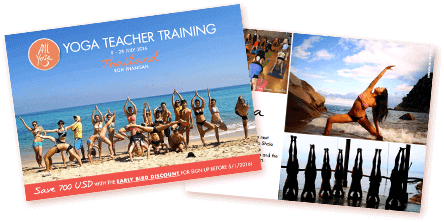
Copyright © 2024, All Yoga International ltd. All Rights Reserved
Privacy Policy